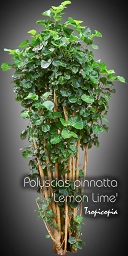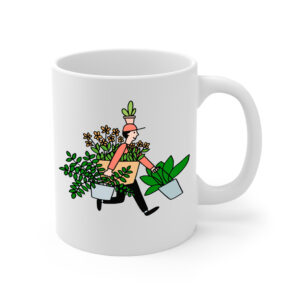Table of contents
Balfour aralia

Latin Name: Polyscias pinnatta ‘Lemon Lime’
Category: Aralia
Family: Araliaceae
Origin: Cultivar
Climate: Tropical
Growing Zones: 11-14
Care Instructions
The Balfour aralia (Polyscias pinnatta ‘Lemon Lime’) is a tropical plant that originates from Cultivar. This aralia plant belongs to the Araliaceae family and is well-suited for growing in USDA zones 11-14.
Complete Care Guide for Balfour Aralia (Polyscias pinnatta ‘Lemon Lime’)
Watering Requirements
The Balfour Aralia, also known as Polyscias pinnatta ‘Lemon Lime’, thrives best with a consistent watering schedule. It is essential to keep the soil evenly moist but not soggy. Water the plant when the top inch of the soil feels dry to the touch. During the growing season, which typically spans from spring to early fall, the plant may require more frequent watering, approximately once a week. In the winter months, reduce watering to every two weeks, as the plant enters a dormant phase. Overwatering can lead to root rot, so ensure that the pot has adequate drainage and avoid letting the plant sit in standing water.
Light Conditions
Balfour Aralia prefers bright, indirect light for optimal growth. While it can tolerate lower light conditions, insufficient light may result in leggy growth and a loss of vibrant color in the leaves. Ideally, place the plant near a window that receives filtered sunlight or in a well-lit room. Direct sunlight can scorch the leaves, so it’s best to avoid placing it in direct sun for extended periods. If you notice the leaves turning yellow or dropping, it may be a sign that the plant is receiving too much direct light or not enough overall light.
Soil Preferences
The ideal soil for Balfour Aralia is a well-draining potting mix that retains some moisture without becoming waterlogged. A mixture of peat moss, perlite, and a standard potting soil works well. This combination allows for good aeration and drainage, which is crucial for the health of the roots. Additionally, consider adding a slow-release fertilizer during the growing season to provide essential nutrients. Fertilizing every 4-6 weeks with a balanced liquid fertilizer can promote healthy growth and vibrant foliage. Be cautious not to over-fertilize, as this can lead to salt buildup in the soil, harming the plant.
Pests and Diseases
Balfour Aralia is generally resilient but can be susceptible to common houseplant pests such as spider mites, aphids, and mealybugs. Regularly inspect the undersides of the leaves and the stems for any signs of infestation. If you notice pests, treat the plant with insecticidal soap or neem oil, ensuring to cover all surfaces of the plant. Additionally, watch for signs of fungal diseases, which can occur if the plant is overwatered or in overly humid conditions. Yellowing leaves and a musty smell may indicate root rot, which requires immediate action to prevent further damage. Ensure proper air circulation around the plant and avoid overhead watering to minimize disease risk.
Special Care Tips
To maintain the health and beauty of your Balfour Aralia, consider the following special care tips. First, regularly dust the leaves with a damp cloth to keep them clean and allow for optimal photosynthesis. This practice also helps prevent pest infestations. Additionally, rotate the plant every few weeks to ensure even growth, as it may lean towards the light source. If the plant becomes too tall or leggy, you can prune it back to encourage bushier growth. Finally, be mindful of temperature fluctuations; Balfour Aralia prefers temperatures between 65°F and 80°F (18°C to 27°C) and should be protected from cold drafts and sudden temperature changes. With proper care, your Balfour Aralia will thrive and add a vibrant touch to your indoor space.








